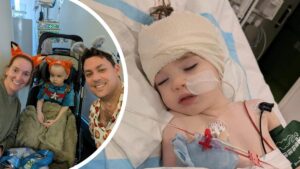
Recent research from the National Taiwan University offers promising insights into hair regrowth, showing that stimulating fat cells around hair follicles can encourage restorative hair growth in mice within 20 days. This study builds on existing knowledge about how skin irritation and injury can trigger hair growth, aiming to explore mechanisms that could be harnessed for treating hair loss in humans.
The research team, led by systems biologist Kang-Yu Tai, examined the biological responses of skin after mild injuries. They noted that hair serves as a crucial protective barrier for mammals, and when the epidermal layer is compromised, the body signals a need to regenerate hair. As the researchers explain in their published paper, “Irritation or injury to the epidermal skin surface…should signal to regrow or reestablish the first protective barrier, the hair.”
In the experiments, researchers shaved mice and then introduced mild skin injuries using chemical irritants or heat. The team compared hair growth in the injured areas with that of normal skin using advanced microscopic imaging techniques. They discovered that skin irritation led to inflammation, attracting immune cells known as macrophages to the injured site. These macrophages signaled fat cells, or adipocytes, to release fatty acids, which were then absorbed by hair stem cells, effectively stimulating hair growth.
The researchers stated, “We demonstrate that in this context, adipocyte activation occurs downstream of immune cell-mediated local inflammation in the chain of skin injury-triggered cellular events.” Following this discovery, they applied a serum containing the same fatty acids directly to the skin of the mice, resulting in similar hair regrowth within approximately 20 days.
It is important to note that this treatment is only effective on hair follicles that are in a resting phase, waiting for the right signals to grow again. In humans, baldness affects these stages in a more complex manner than simply shaving hair off, making the application of this treatment more intricate.
The approach of reawakening hair stem cells presents a safe and relatively quick treatment option for hair loss, although the researchers acknowledge limitations regarding its broader application. They are now working towards clinical trials to assess whether these findings can be effectively translated to human patients.
The study also emphasizes the need for further investigation into the mechanisms behind skin irritation and the immune response, particularly regarding the factors that trigger the release of fatty acids by macrophages. “Their natural existence and established safety profile suggest considerable potential for treating hair loss conditions in the future,” the researchers concluded.
This research has been published in the journal Cell Metabolism, marking a significant step forward in the ongoing quest to understand and potentially reverse baldness.






